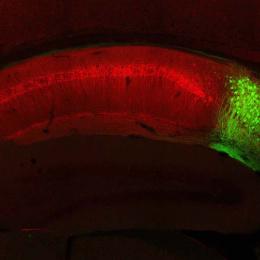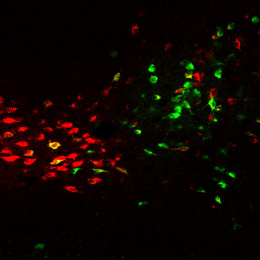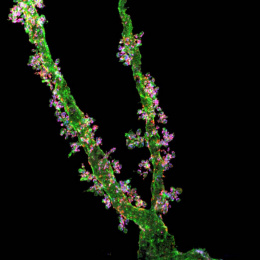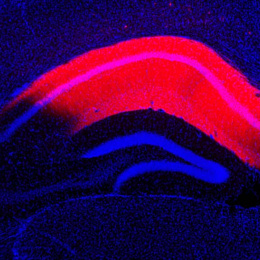Physiological Properties of Memory Cells
Physiological Properties of Memory Cells
Submitted by Dheeraj Roy, Tonegawa Laboratory
Picower Institute for Learning and Memory, MIT Department of Brain and Cognitive Sciences
Memory is a central function of the brain and is essential to everyday life. Recently, our lab developed a novel genetic approach that allows us to visualize cells in the mouse brain that store one memory trace, known as memory engram cells. This image represents memory cells labeled with a pink protein in the memory region of the brain, the hippocampus.
Studying memory at the single cell level has not been possible until recently. By understanding the contribution of brain cells that store a single memory trace, we hope to provide insights into how humans form and recall memories with high accuracy.






